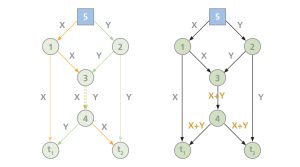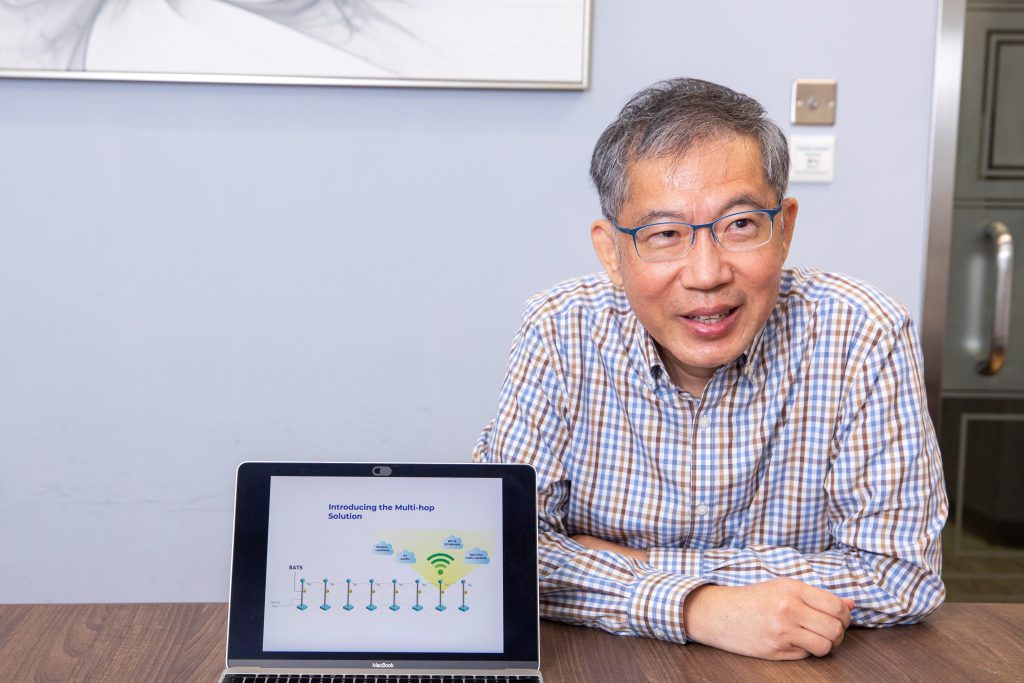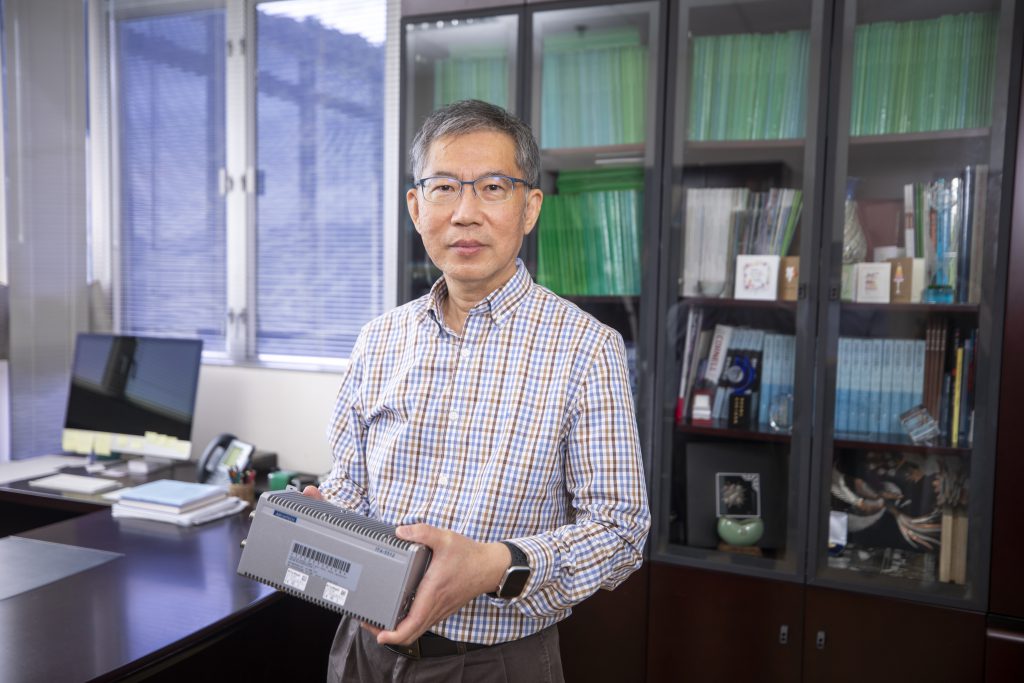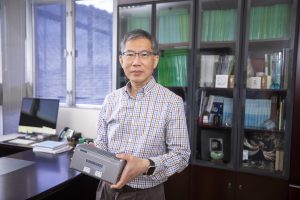Driving down data loss with network coding
Driving down data loss with network coding
As we enter the era of the fifth generation of mobile networks and the Internet of Things, network coding will be the steam engine that drives them, allowing more devices to be connected to the internet.
The novel technology was developed by Professor Raymond Yeung and his team. A new data coding process, it means that the amount of data lost in multi-node wireless transmission can be cut substantially, while increasing the data transfer volume and guaranteeing a more robust and stable network. Network coding can be applied not only to existing mobile networks to help reduce cost, but also to various other applications including satellite communication, data encryption and cloud storage. An evolution in network communication has just begun.

In the Butterfly Network, the messages X and Y originating from the source S are sent via different routes to their respective destinations t1 and t2. The numbered nodes (routers for our purpose) are where such messages get stored and forwarded. Each line represents a channel on which one bit of information can be sent at any particular moment (its channel capacity). In an elementary model of a multi-cast (one-to-many) communication (left), a bottleneck occurs between nodes 3 and 4, where the channel capacity cannot allow the two bits of information X and Y to pass through at the same time. Using the network coding model (right), messages X and Y get coded at node 3 into one X+Y: not two bits but one only, solving the bottleneck.
Safeguarding data with new networking model
Data transmission in networks nowadays is more or less the same as parcel delivery. Routers at intermediate network nodes store and classify the data received before forwarding a copy to the next node, relaying the complete data packet to its destination. However, data delay and loss often happen during the process, and these problems become more severe and more frequent with increased traffic. The longer the distance or the higher the number of nodes that the data moves through, the bigger the data loss becomes. A common phenomenon resulting from the loss is blurry or sluggish video images.
“In theory, we can increase the transmit power of wireless signals to extend the transmission distance between intermediate network nodes and reduce the number of relays. But this will simultaneously interfere with the signals of other types of wireless communication in the area. Researchers have been working for years to break through this seemingly zero-sum limitation of physics, so that data loss can be reduced without changing the transmit power,” explained Professor Yeung.
Network technologists previously believed that the best way to send out multiple messages at once was to encode them into a data packet for high-speed delivery. Professor Yeung and Professor Li Shou-Yen, now a professor emeritus at CUHK’s Department of Information Engineering, however, held a different opinion. They proposed a novel model of information packaging and forwarding in a communication network from their research on network coding, as explained by the Butterfly Network.
“Simply put, data is not sent as a whole but as codes. The data packets received at the intermediate network nodes are encoded into new packets that are sent to the next nodes. This process is repeated until reaching the destination node, where the original message is reconstructed. With this mode of transmission, the problem of data loss accumulation can be solved. Besides, with the overall percentage of data loss during the whole relay almost the same as if it passes through one node only, it also allows more reliable and secure long-distance network transmission, and at the same time significantly increases the data transmission capacity,” explained Professor Yeung.
The technology later evolved into BATched Sparse (BATS) code, which simplifies the encoding and decoding processes, making network transmission more efficient, reliable, stable and secure. As networking devices are upgraded to increase their hosting and computational ability, the BATS code is gathering momentum. “5G communication involves radio waves of high frequency and the connection range is relatively short,” he says. “The operation needs plenty of base stations to ensure adequate coverage. The BATS code allows you to install only micro devices on lampposts to build a communal network. The cost of laying optical fibre and setting up transmitters can be greatly reduced, which is beneficial to the development of 5G communication.”
Connecting the world
Professor Yeung has won numerous accolades for his new technology, but his aspiration is to make it widely applicable in everyday life. This motivated him to found a startup company in 2018 with his fomer PhD student Yang Shenghao, who is now a professor at the School of Science and Engineering at CUHK-Shenzhen. “We have successfully applied the technology to the information exchange of smart lampposts,” Professor Yeung said. “Our next step is to work on enabling Wi-Fi signals from lampposts. Furthermore, we are collaborating with the Civil Engineering and Development Department to install signal devices along a section of country park trail that is not well covered by the mobile network, helping trekkers navigate and obtain weather information or even seek help with ease.”
Just three years after it was founded, the startup company has received her first round of VC funding. Professor Yeung is desperate to see the company grow: as its inventor, he knows the huge application potential of network coding better than anyone.

Professor Yeung will work on using smart lampposts to send Wi-Fi and even 5G network signals, reducing the cost of laying optical fibre and setting up transmitters. The smart lampposts can also collect real-time data on air quality, weather and traffic conditions to foster smart city development.
“The technology can be implemented inside power plants or underground mines, or underwater. It can also be applied to data encryption, cloud storage and the like.”
— Professor Raymond Yeung
Choh-Ming Li Professor of Information Engineering
Co-Director, Institute of Network Coding, CUHK
Research areas: Network Communication, Information Theory and Network Coding
Major achievements:
- 2022 IEEE Claude E. Shannon Award, the highest honour in the field of Information theory
- 2021 IEEE Richard W. Hamming Award (the first Asian recipient)
- 2016 IEEE Eric E. Sumner Award
- Holder of a dozen of patents in relation to the BATS code; author of network coding research papers with more than 10,000 citations; author of textbooks on information theory and network coding adopted by more than 100 institutions around the world



